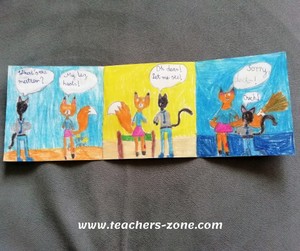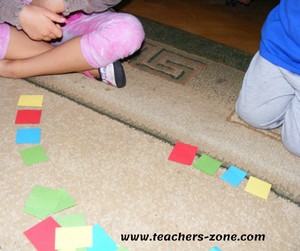Icebreaker Games and Activities for Kids
Icebreaker Games for Kids: If you ever attended summer camp as a child, then you probably know how uncomfortable that first day can be. What about the first hour of that sleepover, or the birthday party where you felt like the outcast? Think back to how cold it felt in the room because nobody was talking, and you thought about calling your parents to pick you up and take you back home.
If you’re planning an event where the children are new to the group you might want to consider a way of making them feel comfortable so you will have fewer tears to deal with and more laughter in the air.
There are several ways you can warm up the chill and make the kids feel welcomed right from the beginning. Take a look at the following 21 fun icebreaker games for kids. With all these games and activity ideas, you should never have any child feeling like you did when you were away from home.
1. A Great Wind Blows
What You Will Need: A chair for each child
Set Up: Put the chairs in a circle so that they are facing the inside. Each child should sit down before the game begins. One child or adult should be selected as the caller and remain standing.
How to Play: The caller should call out “A great wind blows for everyone who ______.” The blank should be filled in with such things as has red hair, has a bow in their hair, who ate cereal for breakfast, who has a younger sibling, etc. For the people who this applies to, they should stand up and change seats at least two away from where they are currently standing. This game could be played similar to Musical Chairs where one chair is removed each time and those left standing are out. The final person who has a seat wins the game.
2. Candy Ice Breaker
What You Will Need: A bowl filled with candy for each person to have at least 5 pieces.
Set Up: When all the candy is placed in the bowl, ask each person to take 1-5 pieces, but don’t tell them what they are going to do with them.
How to Play: Each person must tell something about themselves for each piece of candy they took. So, if someone takes 3 pieces, they must tell 3 things about themselves. Once everyone has had a turn, they can share the candy with their new friends.
3. Conversation Cubes
What You Will Need: This game can be purchased from Amazon and can be taken anyplace you go. It comes with 6 soft foam colorful dice with 36 conversation starters on each one that is suitable for children between the ages of 6 and 10-years old.
Set Up: You can either set the children around the table in one group or you can divide the group up into two teams. Place all 6 dice on the table in front of the group or split them up giving 3 to one team and 3 to the other.
How to Play: There is an activity guide that comes with the game, but it is so versatile that it can be played in several different ways. One idea is to go around the table allowing each person to roll the cube and answer the question, or they can take turns rolling and with each roll, everyone should answer the same question. With this game, you have the flexibility to structure it according to your needs and for the group who is participating.
4. Crocodile Race
What You Will Need: A beginning line and a finish line.
Set Up: Choose teams of 4 to 10 players and form the teams in straight lines.
How to Play: When the teams and lines are formed, the first person on each team will be the leader. Everyone behind the leader will place their hands on the shoulders of the person in front of them. Each team should crouch down to look like a crocodile. All the crocodiles will race to the finish line, or from the start to the finish and back to start again. The first team to finish wins.
5. Face to Face
What You Will Need: Chairs and topics for discussion
Set Up: Gather enough chairs for each person and set them up facing each other. Prepare the conversation topics ahead of time and place them in a box for the caller to hold.
How to Play: The kids will pair up and sit across from each other. When the caller calls out the topic, each team of two will have 30 seconds to discuss the answer. When the 30 seconds is up, the caller will tell the teams to switch partners and once everyone has a new partner the play will begin again with a new topic to discuss. Once everyone has paired up at least one time with each other the game is over. Ask questions appropriate for the age group. Some example topics could be: 1) “If you could create your own subject in school, what would it be?” 2) “If you could change your name what would it be and why?” 3) “What is your favorite sandwich creation?”
6. Getting to Know You
What You Will Need: A beach ball or a similar ball that will fit in the hands of smaller children.
Set Up: Form a circle of children and adults.
How to Play: While standing in a circle, an adult will start the game by tossing the ball to someone and at the same time, ask the person a question. Whoever catches the ball must answer the question and then toss the ball to someone else asking another question. Keep the game moving along at a fair pace. Adults or older children might need to assist the younger players to keep the game moving. Some example questions could be: 1) “How many siblings do you have?” 2) Do you have any pets?” 3) “Where is your favorite place to eat?”
Here are some more get-to-know you game ideas.

